|
This week has seen a lot of playing. I am working on bowing and timing. I am playing some amazing Shetland pieces - some of the oldest we have. They are both tunes from the West side of Shetland. The fiddler was an important person and used to play at all the social events - especially weddings. There would always be a bridal tune played to escort the bride from the church to the house and then wedding dances. There were even bedding tunes - yes bedding tunes. The fiddler was the only person allowed in the room, other than the bride and groom (who would be in their box bed with the curtains drawn presumably).
The wedding tunes for processions would be quite slow as everyone would be tramping across the countryside. Weddings would sometimes be slightly sad. Daughters would often be moving quite a long way from home. The second tune, Da Muckle Reel o' Finnigirt is an old dance tune and has impossible timing, with changes in time signature but an underlying pulse all through. It has been notated from the playing of Peter Fraser (Shetland Fiddler) who grew up on the West Coast of Shetland. It is VERY close to Norwegian hardanger music and sounds a bit strange when you first hear it. It has seven parts - lots of different motifs which repeat. The original dance involved travelling parts and not dancing in pairs. I found these tunes during the summer (from Catriona MacDonald, also from the West coast of Shetland). Coincidentally I met a dancer/fiddler, Jane Harrison there whose father collected dances. She sent me his notes from a meeting her Dad had with Peter Fraser in 1959. What a piece of history! This sets out the dance - which has not been regularly performed since about 1880 when Peter Fraser's grandfather died. This was because when someone died there would be no dancing in the house for about four years and Peter Fraser's house was where the dances were held in those days. If it wasn't performed there it probably wouldn't be at all. It has never really been revived since this lapse. The notes actually say that the tune gradually quickens throughout. That is not particularly how I was taught it by Catriona. Jane thinks she has an old tape recording of Peter Fraser playing the tune which she is gong to try to dig out. Amazing! Both tunes are played very smoothly on long bows and feel tricky, trills, doublestopping and the issue of whacky timing - or more properly an irregular meter?
0 Comments
The Canon's Gait session has been going from strength to strength. I have had some great evenings there recently. Ed Miller has joined us for two weeks - fantastic folk singer.
Also visited the Storytelling Centre in Edinburgh on Friday for a lovely afternoon's singing with another fantastic folk singer - Steve Byrne from Malinky. He reminded me of the Kist o Riches site (which Steve worked on for three years). AMAZING resource for Scots song. music and storytelling. I have been delving into this from time to time. 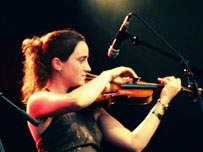 Emma Reid Went to the excellent Northern Streams weekend which is run by the Traditional Music and Song Association of Scotland (Edinburgh & Lothians Branch). It was a wonderful programme of three concerts and numerous workshops over three days. I took full advantage and went to as many events as humanly possible over the weekend. We heard Icelandic, Norwegian and Swedish song on Friday evening. FUNI - Bára Grímsdóttir and Chris Foster (Iceland/Britain) gave us a lot of information about Icelandic folk music and instruments. Lots of songs in lydian mode!! Karin Ericsson Back and Maria Misgeld (Sweden) sang a capella - beautiful. Kim André Rysstad and Lajla Buer Storli played a mix of Norwegian song and hardanger fiddle. My partner wasted no time and was deep in conversation with Lajla about hardanger fiddles. He has just made one. Lajla was very friendly and interested to help. She has put us in contact with a Norwegian who look after her fiddles. She also told me about some hardanger summer schools. On Saturday I took my hardanger to a Fiddle workshop with Lajla Buer Storli (Hardanger region, Norway). We learned, by ear, a great but difficult tune from the hardanger area of Norway. It wasn't that it was technically difficult, but the sequences and rhythms are so different from Scottish folk music it was difficult for any of us to get it quickly. Next up was a workshop in Harmony in music with Daniel and Emma Reid (Sweden/Britain). Daniel plays saxophone and Emma is a truly fantastic fiddler. The tune was great and we learned some drones and rhythmic accompaniment. Finally I learned Song & accompaniment, with Julie Hjetland (Denmark) and Jens Ulversand(Sweden) and also Annlaug Borsheim and Rannveig Djønne. The first half of the workshop saw us learning a Danish song about cabbage and gruel - it was a hard life!. Julie Hjetland showed us how she does body percussion - which involved hitting herself andlooked quite sore but was really effective! n the second half of the workshop Annlaug Borsheim and Rannveig Djønne (Norway) taught us a lovely tune and lullaby. Annlaug plays guitar and sings but she also plays the hardanger. She was very interested in mine too. I think its unusual to see one outside Norway. On Saturday evening we went to the second concert. The highlights for me were the wonderful fiddling from Emma Reid - beautiful polskas (3/4/ tunes - stressing beats 1 and 3); great songs and interesting accompaniment using looping from Jullie Hjetland (Denmark) with Jens Ulversand (Sweden); and some really pretty accordion tunes and song from Annlaug Borsheim and Rannveig Djønne (Norway). Saw them all again on Sunday in a finale concert. We also did Icelandic dancing and icelandic singing! First time my hardanger has been out the house and Lajla and Annlaug gave us some great feedback on it. I came away feeling very motivated and learned a lot over the weekend. Annlaug stayed on for a couple of days and so I also went out to Pathhead last night for a workshop with her. More great hardanger fiddle tunes and it was a good experience to meet the Pathhead fiddlers. The SCO performed an interesting programme of baroque greats last week. It was a full program including Telemann's Water Music Suite in C major "Ebb and Flow", Heinichen's Sonata in F major for two horns, lots of Bach of course and Vivaldi's Concerto in G minor "di Dresda".
There was a preconcert talk with the Conductor, Richard Egarr who also played harpsichord. Richard Egarr is internationally known for his work with period music and is now an Associate of the SCO. It was a great concert, made all the more interesting by the baroque music that we have been playing in our own strings group. Richard Egarr talked about cutting through the misinformation about baroque music. He mentioned research on tempo which would sometimes change during a piece for good musical reasons. This was contrary to the belief of several music colleges he had visited where students were forced to stick rigidly to a tempo. He also talked about the harpsichord and its lack of dynamics. This meant that the strings needed to play down. They should also avoid vibrato. It was interesting that during the performance I could see the conductor waving the violins down at times so the harpsichord could be heard and there wasn't a vibrato in sight. Something that happens to us when we play baroque too. Richard Egarr was very complimentary about the SCO's ability to be flexible and intelligent in their interpretation of the music. It was beautiful music and a really interesting night. I blogged a couple of months ago about the hardanger violin that we have been making (well - that my partner has been making). Its taken several years of research and building but its now finished in the white. Its a nine string fiddle (four top strings and five sympathetic strings) and has a REALLY great sound. I am delighted with it. Its a beautiful thing.
Rosing and varnish is next. I was improvising soul music this week. That was interesting.
Soul has its origins in Gospel, Blues and Jazz. We played in the Dorian mode. This is built off the second degree in a scale. Don't glaze over - this stuff is not that difficult. Soul chord progressions can be simple - mainly ii, V (so - in the key of C - the chords would be likely to be Dm7, G7 (dominant chord). The Dorian mode would run D - D (ie from the second degree of C) and uses the notes of C major scale. It works the same for any key. That's just the start though. We also used the blues scale here and there, and if the chords are Dominants +9 you can use mixolydian (basically a flattened 7th). Then there is the rythmns and voicings. This takes a bit of research and there are loads of great soul artists out there to listen to. Otis Redding, Marvin Gaye, Diana Ross and the Supremes. More on that later We had a country music quiz in class recently. I managed to get all the questions right except one - aaaaaaagh! What was the question? Who produced the record "Keep on the sunny side" which was recorded by the Carter family in 1928. If you don't know the answer its actually not that easy to Google. But - its Ralph Sylvester Peer. 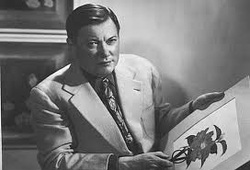 Here he is. So who was he? He was a producer, engineer, and talent scout who spearheaded the U.S. recording industry's shift away from classical and opera to indigenous American roots music, while essentially creating the country market that continue to flourish today. He's an important figure but is not that well known by the public at least as he did not seek the limelight. In 1927 he arrived in Tennessee to scout fresh local talent on behalf of the Victor record label. A few years prior, he had not only assisted in the first blues recording by Mamie Smith of “Crazy Blues” and later ones by Fats Waller and Louis Armstrong’s Hot Five, but also produced the first commercially successful country session with “Fiddlin’ John” Carson. During the next two weeks, he recorded what has become known as the Bristol Sessions with Jimmy Rodgers and the Carter family, credited as the birth of modern country music, earning Peer the nickname of “Father of Country Music” and his place in the Country Music. He founded his own company Peermusic - which still survives. So now you (and I) know. The BBC broadcast a programme last week about Jack Bruce, the internationally renowned bass player and vocalist. I caught up with it today on the iPlayer. Best of Cream was the first album I ever bought. I still have it. Jack Bruce, Eric Clapton and Ginger Baker ware big influences on my life. Sunshine of your Love is still one of my absolute favourite tracks and so evocative of that time - along with Deep Purple, the Who, Led Zepp, Jefferson Airplane …… Must be one of the most recognisable bass riffs ever. Jack Bruce has had some life. He has a fearsome reputation as a great player. He also writes great songs with Pete Brown, lyricist and poet. He has had his fair share of challenges. A struggle with hard drugs, the death of a son, the breakup of his first marriage, and liver cancer resulting in a liver transplant. He came through all of that and has survived. All the members of Cream have made it through - goodness knows how. Many people didn't. Jack Bruce is Scottish. He returned to Celtic connections this year and played with Lau - a really talented trad band with Aidan O'Rourke on fiddle (one of my favourite fiddlers), Kris Drever on guitar and backing vocals, Martin Green on accordion and Jim Sutherland on bodhran. The complete programme is on the iplayer for another few days. Watch the clip os Sunshine of Your Love below. Its completely epic - spans the generations. Respect to them all. Trad and Cream - what could be better? Monday was spent listening to and talking about country music. There are lots of different styles within country music. Its a huge topic in its own right. I blogged about Bluegrass earlier. Today we listened to Rockabilly and Nashville.
Elvis and Johnny Cash were early rockabilly artists. Both began their recording careers in the 1950s with Sun studios (run by Sam Philips). Evis' recording contract was sold to RCA and he then morphed into more of a rock and rolls star. Heartbreak Hotel was his first "pop" no 1 - its very bluesy. Johnny Cash wanted to sing gospel originally but was turned down by Sam Philips. He re auditioned and went into country instead. Cash, Elvis, Jerry Lee Lewis and Carl perkins all went on tour together in 1956 and were known as the Million dollar quartet. I like the rockabilly style. Its quite raw and gutsy, with strong lyrics. By contrast the Nashville style of the mid 1950s was more commercial. It had more instrumentation, and more backing vocals - Nashville attracted lots of session musicians. It was smooth and, in my view a bit bland and safe. But it sold. Jim Reeves and Don Gibson were important artists. The Nashville style led to more sophisticated recording techniques - an art in itself. This has influenced recording today. Went down to the Sage with my daughter on Sunday. We both play guitar a bit and we decided to try a ukelele workshop for something different.
If you haven't been to the Sage it has loads of great music teaching events. Anyway, we were given ukeleles (yes - you don't even need to have your own) and we did loads of simple songs. We were all grooving along to Bob Marley. The tuning was high G, C, E, A . They are very easy to play, very small and light, cheap to buy and easy to carry. I can see why they are so popular. And they sound quite good. I'd recommend it as a day out and to try something different - although Sam and I could have done with going to a more advanced workshop probably. But it was great to have the chance to try one. There were all age groups there. Sam and I plan to buy a ukelele to join the ever growing list of instruments that live with us. Lucky ukelele.... |
Fiona Harrison
|
© Fiona Harrison, all rights reserved, 2011
Background Header art, Sound Forest - by Will Power, at Flickr Creative Commons-2019
Background Header art, Sound Forest - by Will Power, at Flickr Creative Commons-2019

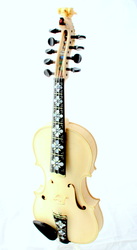
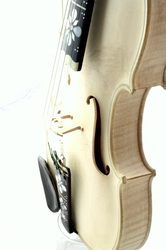
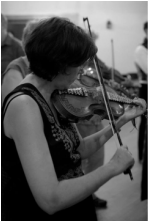
 RSS Feed
RSS Feed